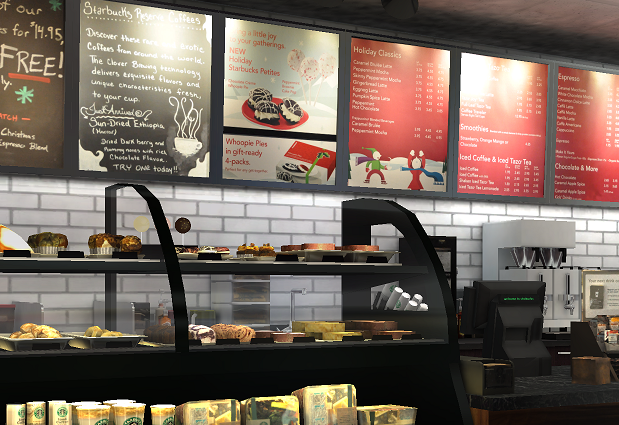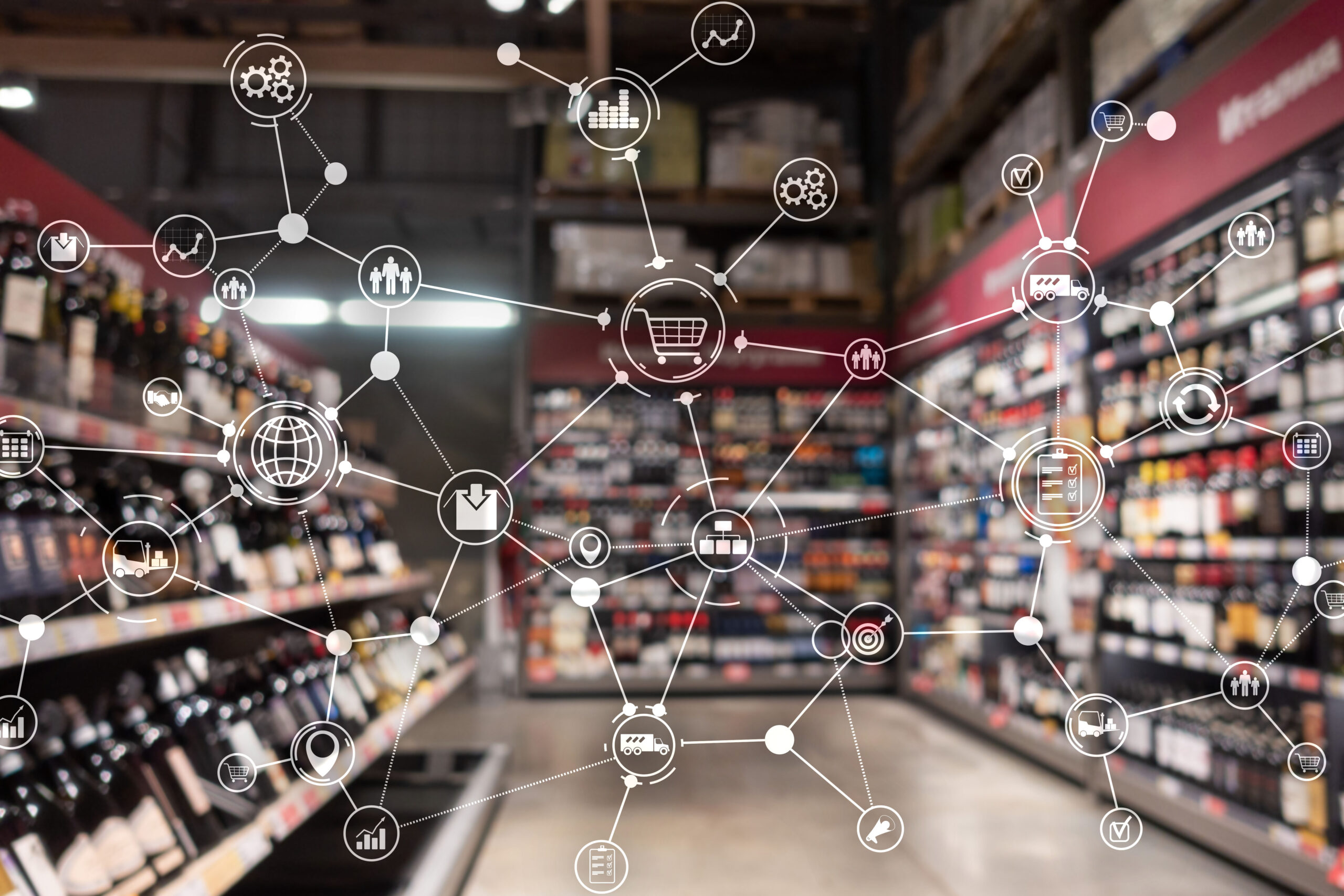In recent years, the quick service restaurant (QSR) industry has witnessed a remarkable shift in consumer preferences and behaviors, prompting significant changes in the market landscape. One notable trend that has emerged is the rise of restaurant consumer packaged goods (CPGs), presenting a potential game-changer for the industry. With more consumers seeking convenience and quality in their dining experiences, the integration of restaurant CPGs into the quick service industry has the potential to revolutionize how food service brands engage with customers, deliver products, and drive growth. In this blog post, we’ll delve into the implications of this emerging trend and explore how restaurants can look to CPG brands to stay ahead.
What is a restaurant CPG?
Consumer Packaged Goods (CPG) are essential products consumed frequently and regularly replaced, aimed at the end consumer and commonly found on store shelves. These encompass various categories, including food, beverages, personal care, household items, and over-the-counter medications. Unlike durable goods, like appliances or electronics, CPGs are everyday essentials that drive demand through routine replenishment and consumption.
Restaurant CPG products are specifically tailored for retail sale and consumption beyond the restaurant premises. These products, offered by CPG companies, include prepackaged foods, sauces, dressings, marinades, seasonings, frozen meals, and branded merchandise like apparel or cookbooks. By leveraging direct-to-consumer channels, restaurant CPGs extend the reach of restaurant brands, allowing consumers to enjoy their favorite flavors and experiences at home with convenience and familiarity. This expansion onto store shelves enhances brand visibility and meets consumer demand for restaurant-quality products in their own kitchens.
The Rise of Restaurant CPGs
Restaurant CPGs may appear to be just a minor component for restaurants, but they actually have the potential to wield significant influence, especially in the quick-service industry.
During the Covid-19 pandemic, while much of in-store shopping halted, the business models of the food industry changed, from small grocery stores to mom-and-pop shops to supermarkets and large restaurant chains. The reality was that American businesses needed to adapt. Stores that offered convenience and delivery, like Amazon, skyrocketed, and even large retail stores like Target and Walmart had to make changes to stay competitive. As the pandemic ended, much of the in-store shopping resumed. However, the restaurant industry was permanently changed. People got used to being able to quickly run into a store and grab pre-packaged food, wrapped up and ready to, without the lines, the wait, and the need to sit at a table, and the reality is that many people didn’t want to give that up.
So, what is the most important thing to the new era of consumers? Convenience.
In fact, convenience stands out as a pivotal factor in consumer decision-making processes, with a staggering 97% of shoppers citing it as a top priority last year, according to the 2024 Gitnux Market Data Report 2024. Consider the office worker deliberating where to grab lunch. They may lean towards restaurant A, renowned for its quality offerings but notorious for long wait times, or opt for restaurant B, which not only delivers prompt service but also boasts a grab-and-go case stocked with ready-made favorites. The surging popularity of grab-and-go options, highlighted by a notable 72% increase since the onset of the pandemic, as reported by Hubert, underscores the mounting demand for hassle-free dining solutions that fit seamlessly into consumers’ busy lifestyles.
Customers increasingly seek out establishments they can rely on, ones that deliver swift service without compromising on quality. Whether it’s snagging a favorite smoothie en route to work or grabbing an additional meal for a late night at the office, convenience-driven offerings resonate deeply with modern consumer preferences and behaviors. In today’s fast-paced environment, restaurants that adeptly incorporate CPG strategies into their operational framework position themselves favorably to not only meet but exceed customer expectations while safeguarding profitability amidst the ever-evolving industry landscape.
How will they change the quick service industry?
Fast-casual restaurant operators are on the brink of a transformation with the rise of restaurant CPGs, signaling the necessity for establishments to align with shifting consumer demands. Let’s delve into how these initiatives can reshape fast-casual dining, spanning from revenue diversification to bolstering brand loyalty and responding to evolving consumer preferences.
As fast-casual restaurants incorporate CPG strategies into their frameworks, prioritizing innovation and flexibility becomes paramount to staying ahead in the food service industry.
Diversified Revenue Streams
Introducing CPGs enables quick-service restaurants to enhance their revenue streams and opens avenues for innovative product offerings. For instance, imagine a popular fast-food chain known for its signature sauces and dressings. By launching these coveted condiments as standalone CPGs, available in-store and online, the restaurant can create a new product line that appeals to loyal customers and reaches a broader audience. Customers who enjoy the restaurant’s flavors can now bring a taste of their favorite dishes home, elevating their dining experience beyond the traditional fast-food setting. This expansion into retail-ready consumer goods opens up a new world of business opportunities, even one day leading to placing the brand on grocery store shelves.
Enhanced Brand Loyalty
Quick-service establishments that venture into CPGs expand their revenue streams and cultivate stronger brand loyalty among customers. Imagine a popular sandwich shop introducing a line of pre-packaged sandwiches and signature drinks in the restaurant. This strategic move allows patrons to enjoy their favorite menu items on the go, whether grabbing lunch between meetings or heading back to the office. As people enjoy these products in various settings, from busy street corners to office lunchrooms, they become walking advertisements for the brand, reinforcing its presence and sparking conversations among passersby. Customers who regularly purchase these CPGs are more likely to remain loyal to the restaurant, driving repeat business and word-of-mouth referrals. By extending their brand presence beyond the physical restaurant space, quick-service establishments can strengthen customer relationships and solidify their position in the market.
Continuous Adaptation to Consumer Preferences
Quick-service establishments embracing CPGs demonstrate a commitment to continuous adaptation to evolving consumer preferences. Imagine a well-known coffee chain like Starbucks updating its grab-and-go case with seasonal offerings such as specialty drinks, snack boxes, and ready-to-heat sandwiches. This strategic move aligns with the changing tastes and preferences of consumers, ensuring that the restaurant keeps up with the latest trends in the market. By offering a variety of high-quality, convenient products beyond their traditional menu, quick-service restaurants can stay ahead of the curve and remain competitive in the dynamic food service industry. This proactive approach not only meets but exceeds customer expectations, driving sustained growth and success for the brand.
Streamlined Operations
Quick-service establishments embracing restaurant CPGs can anticipate a significant improvement in operational efficiency, a critical aspect in light of the leaner teams many QSRs are facing today, as reported by the Washington Post. By introducing more self-serve options, not only can they reduce wait times, but they can also enhance customer satisfaction by offering convenient meals for busy patrons. This strategic move not only optimizes kitchen workflows but also allows restaurants to function more smoothly with fewer staff members. With pre-packaged offerings readily available, restaurants can streamline their operations, ensuring a more efficient service delivery process. Consequently, quick-service restaurants can better meet the needs of today’s fast-paced consumers while driving increased success and profitability in their operations.
Pave the Way for Partnerships
Quick-service restaurants venturing into CPGs also open up opportunities for lucrative partnerships with various brands, offering a multitude of benefits. An article from Restaurant News showcased how Starbucks recently teamed up with Stanley, renowned for its insulated tumblers, to launch an exclusive cobranded cup celebrating the new winter menu. This collaboration generated significant buzz, particularly among the Gen Z demographic, resulting in long lines of eager customers outside Target stores before dawn. The limited-edition cups quickly became sought-after items, with some fetching high resale prices on platforms like eBay. Such partnerships not only drive excitement and virality but also extend the reach of both brands, attracting new customers and fostering brand loyalty. By strategically aligning with complementary brands, quick-service restaurants can leverage their CPG offerings to forge mutually beneficial collaborations that amplify their market presence and drive sales.
How InContext Can Help
The rapid evolution of the quick service industry, driven by shifting consumer demands and market dynamics, necessitates strategic adaptation by restaurant operators. The introduction of restaurant CPGs presents a significant opportunity for quick-service establishments to innovate and thrive in this dynamic landscape.
However, navigating this transformation requires informed decision-making and precise execution. Guessing about product selection, placement, and overall strategy can lead to missed opportunities and costly mistakes. At InContext, we recognize the importance of data-driven insights and strategic project management in driving store-level revenue growth. Our all-in-one visualization tool, ShopperMX, can help answer questions like — which packaging is more likely to be noticed, liked and result in sales? Our retail enablement tool, SMX GO, helps to empower brands to visualize and optimize their displays with augmented reality technology before rolling them out across multiple locations.
Partnering with InContext means gaining access to industry-leading 3D product assets and cutting-edge AR technology. Whether you’re looking to enhance your brand presence, optimize your product offerings, or improve your store layouts, InContext is here to help you navigate the changing landscape and achieve your business objectives. Join us in leveraging the power of data and innovation to unlock new opportunities for growth and success in the quick service industry.




